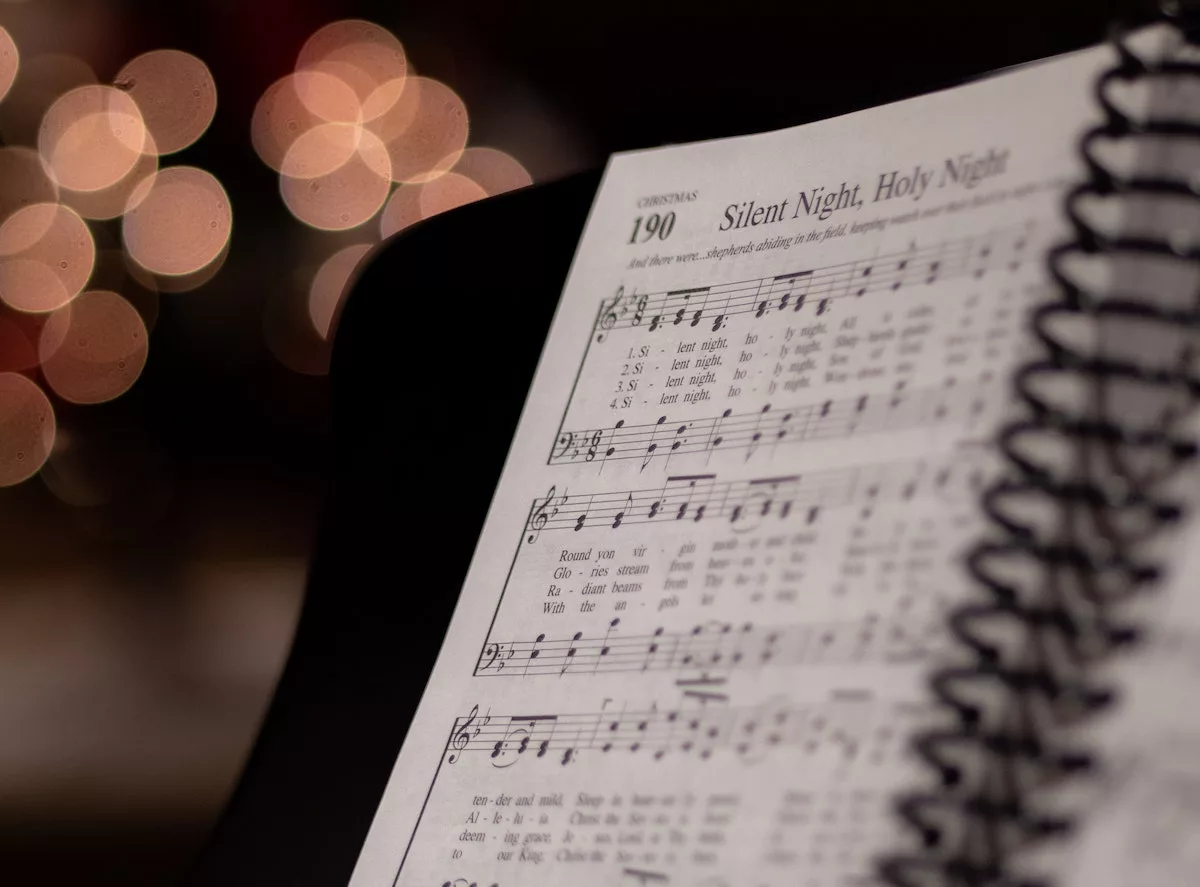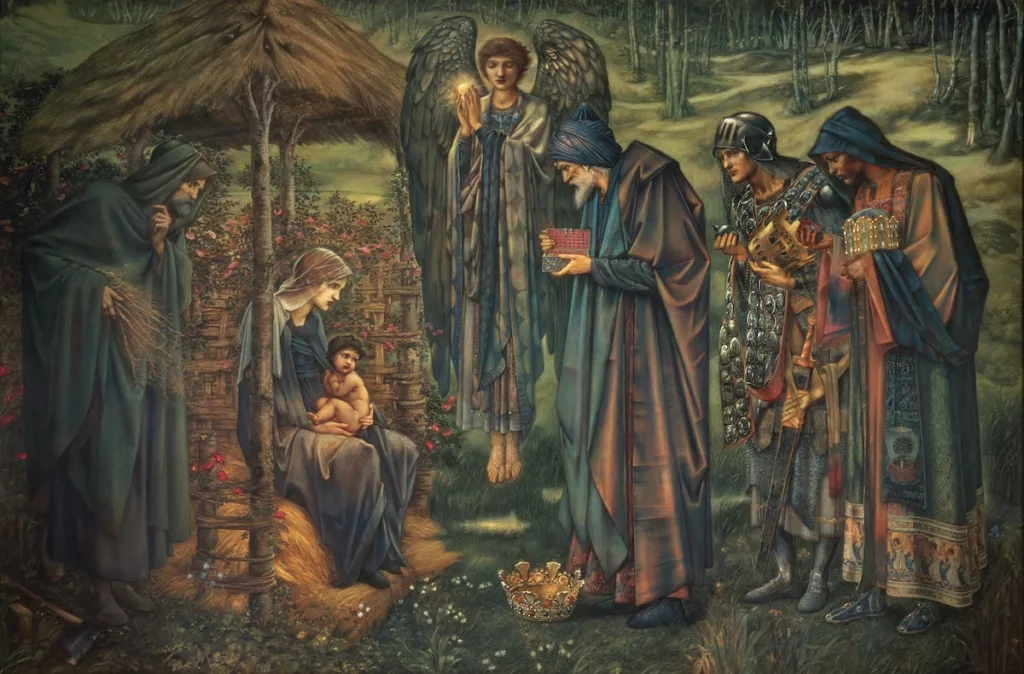The Top 7 Most Beloved Christmas Carols and Hymns

I have such fond memories of carol singing as a youngster with my Grandparent’s church in the north of England. We would often head out to retirement homes around the town and sing on the doorstep or even put on a bit of a medley from the warmth of their living room.
This ended up becoming quite a lucrative endeavour as my sister, two cousins and I ended up going door to door singing (in the expectation of cash). But that’s a story for another time.
As the holiday season approaches, many people find themselves drawn to the familiar melodies and lyrics of beloved Christmas carols and hymns. These songs, which have been passed down through generations, are a reminder of the true meaning of Christmas and the joy and hope that the season brings.
In this blog post, we will take a look at the top 7 most popular and enduring Christmas carols and hymns, sharing the history and background of each song, as well as some of the most well-known lyrics and their meaning.

Hark! The Herald Angels Sing
This beloved Christmas carol was written in 1739 by Charles Wesley, one of the founders of the Methodist movement. The song was originally titled “Hark! How All the Welkin Rings” and was written to celebrate the birth of Jesus Christ. The lyrics of the song draw from the Gospel of Luke, which tells the story of the angel Gabriel appearing to Mary to announce that she will give birth to the son of God. The song has been performed and recorded by countless artists over the years, and remains a beloved and enduring Christmas classic.
Lyric snippet:
“Hark! The herald angels sing, ‘Glory to the newborn King! Peace on earth, and mercy mild, God and sinners reconciled.'”
Bible verse reference: Luke 2:10-14
In this passage from the Gospel of Luke, the angel Gabriel appears to the shepherds to announce the birth of Jesus Christ, and the shepherds go to Bethlehem to find the baby and worship Him. This passage matches the context and lyrics of the carol, which celebrates the birth of Jesus and the peace and reconciliation that His birth brings to the world.

O Come, All Ye Faithful
Also known as “Adeste Fideles,” this Christmas carol is believed to have originated in the 18th century, although the exact history of the song is unclear. It is thought to have been written in Latin by John Francis Wade, an English Roman Catholic composer and musician. The song was translated into English in the 19th century by Frederick Oakeley, and has since become a beloved Christmas hymn in many different languages and cultures.
Lyric snippet:
“O come, all ye faithful, joyful and triumphant! O come ye, O come ye to Bethlehem; come and behold Him, born the King of angels.”
Bible verse reference: Matthew 2:1-2
In this passage from the Gospel of Matthew, the wise men from the East come to Jerusalem to worship the newborn King of the Jews. This passage matches the context and lyrics of the hymn, which is a call to worship and adore Jesus Christ, the King of angels and the newborn Savior of the world.
O Little Town of Bethlehem
This Christmas carol was written in 1868 by Phillips Brooks, an American Episcopal bishop and hymn writer. The lyrics of the song were inspired by Brooks’ visit to the town of Bethlehem in the Holy Land, and are a reflection on the birth of Jesus Christ and the impact it had on the world. The song has been performed and recorded by countless artists over the years, and remains a beloved and enduring Christmas classic.
Lyric snippet:
“O little town of Bethlehem, how still we see thee lie! Above thy deep and dreamless sleep the silent stars go by.”
Bible verse reference: Luke 2:6-7
In this passage from the Gospel of Luke, Joseph and Mary travel to Bethlehem to be registered for the census, and Jesus is born there in a stable because there is no room for them in the inn. This passage matches the context and lyrics of the carol, which reflects on the impact of Jesus’ birth on the world and the peacefulness and serenity of the town of Bethlehem on the night of His birth.
The lyrics remind us that the birth of Jesus was not just a historical event, but a transformative moment in human history, one that continues to have a profound impact on the world today.
Angels We Have Heard on High
This Christmas carol is believed to have originated in France in the 18th century, and was translated into English in the 19th century by James Chadwick, the Roman Catholic Bishop of Hexham and Newcastle. The lyrics of the song are based on the story of the angel Gabriel appearing to the shepherds to announce the birth of Jesus Christ, as told in the Gospel of Luke. The song has been performed and recorded by countless artists over the years, and remains a beloved and enduring Christmas classic.
Lyric snippet:
“Angels we have heard on high, sweetly singing o’er the plains, and the mountains in reply echoing their joyous strains.”
Bible verse reference: Luke 2:8-14
In this passage from the Gospel of Luke, the angel Gabriel appears to the shepherds to announce the birth of Jesus Christ, and the shepherds go to Bethlehem to find the baby and worship Him. This passage matches the context and lyrics of the carol, which celebrates the angel Gabriel’s announcement of the birth of Jesus and the joy and wonder that the news brought to the world.
The First Noel
This Christmas carol is believed to have originated in England in the 16th century, and is thought to have been written by English composer John Stainer. The song’s title, “The First Noel,” is a reference to the word “nowell,” which means “birthday” in Old English. The lyrics of the song celebrate the birth of Jesus Christ as the fulfillment of God’s promise to send a Savior to the world.
Lyric snippet:
“The first Noel, the angel did say, was to certain poor shepherds in fields as they lay; in fields where they lay keeping their sheep, on a cold winter’s night that was so deep.”
Bible verse reference: Isaiah 9:6-7
In this passage from the book of Isaiah, the prophet foretells the coming of a savior who will be called the Mighty God, the Everlasting Father, and the Prince of Peace. This passage matches the context and lyrics of the carol, which celebrates the birth of Jesus Christ as the fulfillment of God’s promise to send a savior to the world.
Joy to the World
This popular Christmas hymn was written by Isaac Watts, an English hymn writer and theologian, in the 18th century. The lyrics of the song are based on Psalm 98 in the Bible, and were originally written as a hymn of praise and thanksgiving to God. The song has been performed and recorded by countless artists over the years, and remains a beloved and enduring Christmas classic.
Lyric snippet:
“Joy to the world, the Lord is come! Let earth receive her King; let every heart prepare Him room, and Heaven and nature sing.”
Bible verse reference: Psalm 98:1-3
In this passage from the book of Psalms, the Psalmist calls on the whole world to sing to the Lord and make a joyful noise to the King of the world. This passage matches the context and lyrics of the hymn, which is a celebration of the arrival of Jesus Christ, the King of the world, and a call to worship and praise Him.

Silent Night
This Christmas carol, also known as “Stille Nacht” in German, was written in 1818 by Franz Xaver Gruber, an Austrian primary school teacher and church organist. The lyrics of the song were written by Joseph Mohr, a Roman Catholic priest who was Gruber’s friend and colleague. The song was originally written for guitar and voices, and was first performed on Christmas Eve in a small village church in Austria. It has since been translated into countless languages and performed by countless artists, and remains one of the most beloved and enduring Christmas carols of all time.
Lyric snippet:
“Silent night, holy night, all is calm, all is bright round yon virgin mother and child. Holy infant, so tender and mild, sleep in heavenly peace, sleep in heavenly peace.”
This carol celebrates the peacefulness and serenity of the night of Jesus’ birth in Bethlehem, and the joy and wonder of the event.
Bible verse reference: Luke 2:1-20
In this passage from the Gospel of Luke, the angel Gabriel appears to Mary to announce that she will give birth to the son of God, and Joseph and Mary travel to Bethlehem to be registered for the census, where Jesus is born. This passage matches the context and lyrics of the carol, which celebrates the peacefulness and serenity of the night of Jesus’ birth in Bethlehem, and the joy and wonder of the event.
Conclusion
These top 7 Christmas carols and hymns (possibly biased haha) are a reminder of the joy, hope, and wonder of the Christmas season.
From the angel Gabriel’s announcement of the birth of Jesus to the shepherds, to the silent night of His birth in Bethlehem, these songs are a celebration of the greatest gift of all – the love of God made manifest in the person of His son, Jesus Christ.
May these beloved carols and hymns fill your heart with joy and peace this holiday season.






One Comment